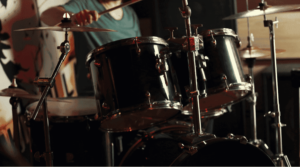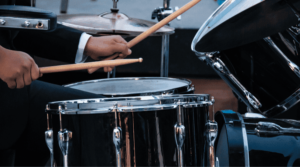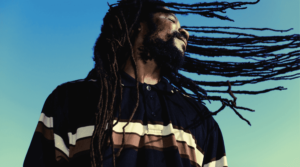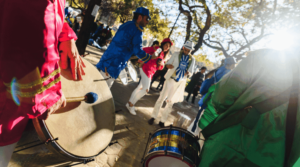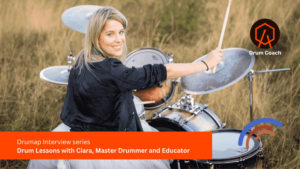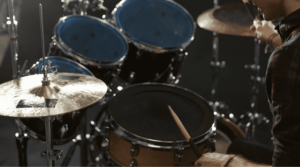Hello, rhythmic enthusiasts! The pulse-pounding beats of Samba Batucada resonate in the hearts of music lovers worldwide. From parades to performance stages, Samba Percussion brings forth an unparalleled energy. If you’re keen on entering this vibrant world, you’re in the right place. Let’s delve into the essentials!
What is Samba Batucada?
At its core, Batucada refers to a percussion ensemble. It’s a term often used mostly outside Brazil, and while it doesn’t strictly pertain to Samba, it has become synonymous with the genre. In essence, a Batucada ensemble is a rhythmic orchestra, and in this context, we’ll focus on Samba rhythms tailored for Batucada formations. If you’ve ever felt the desire to play Samba on a drum-set, check this post for an in-depth guide.

Beginner Tips to play Samba Batucada or Samba Percussion:
- Feel the Rhythm: The essence of Samba Batucada lies in feeling each beat. Dancing can help you internalize rhythms, enhancing your playing skills.
- Kickstart with the Basics: For those just starting out, the tamborim or chocalho offers an easier entry point into Samba Percussion.
- Listen to the Maestros: Dive into the works of iconic Samba Batucada groups. The rhythms of Mangueira, Salgueiro, Império Serrano and others will guide your journey.
- Build Your Endurance: Samba Percussion requires stamina. Regular practice sessions will not only refine your skills but also build the necessary endurance.
The Main Instruments of Samba Batucada
- Caixa (Snare Drum): Often defining the unique rhythmic identity of each Samba school, the Caixa is indispensable. The pattern it follows is a groove widely adopted and offers the ensemble its steady backbone.
- Tamborim: Dialogue is crucial in Samba Percussion, and the tamborim plays varied patterns, engaging with the melody, the repique, or other instruments. The “telecoteco” pattern is foundational and is a must-know for any Samba enthusiast.
- Surdo: Serving as the heartbeat of Samba, the three surdos have distinct roles. Surdos 1 and 2 maintain their patterns, with the lower surdo emphasizing the samba’s strong second beat. The third surdo, known as “resposta,” adds rhythmic variations to the mix.
- Agogô (4 bocas): Although not present in every group, the agogô’s captivating tone is hard to miss. Introduced by the Império Serrano Samba School, its patterns can vary widely, offering a melodic touch to the percussive ensemble.
- Repenique (Repique): Often leading the Samba group, the Repique gives cues for rhythmic arrangements and tempo changes. It’s an instrument of command, guiding the ensemble’s flow.
Dive Deeper with Drumap App:
The true essence of Samba Batucada and Samba Percussion awaits in the dedicated playlist on the Drumap App. Packed with tailored music scores, exercises, and a wealth of knowledge, it’s your ultimate guide. Whether you’re a novice seeking foundational patterns or an advanced player aiming for mastery, this playlist is your ticket. Check it out now!
Additionally, for an enriched learning experience and community interaction, join us in the ‘Master-ing Samba’ group on the Drumap App.
Wrap Up:
Playing Samba Batucada and Samba Percussion is more than just playing rhythms; Samba is a celebration, a history, and an emotion. Join us on this rhythmic adventure, and let’s make every beat count!
In rhythm and resonance,
Raul Rodrigues
About the author: Raul Rodrigues is drummer and percussionist, he has played with great musicians and samba groups in Brazil, Argentina and Europe. Raul is also the founder and CEO at Drumap.


